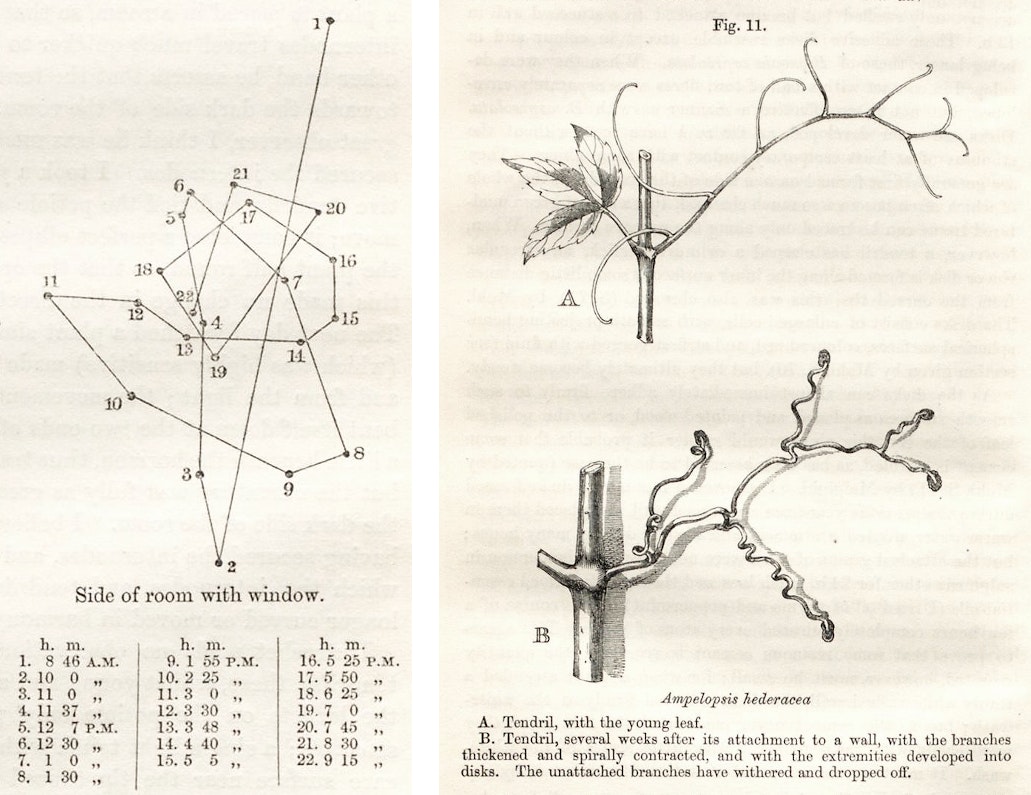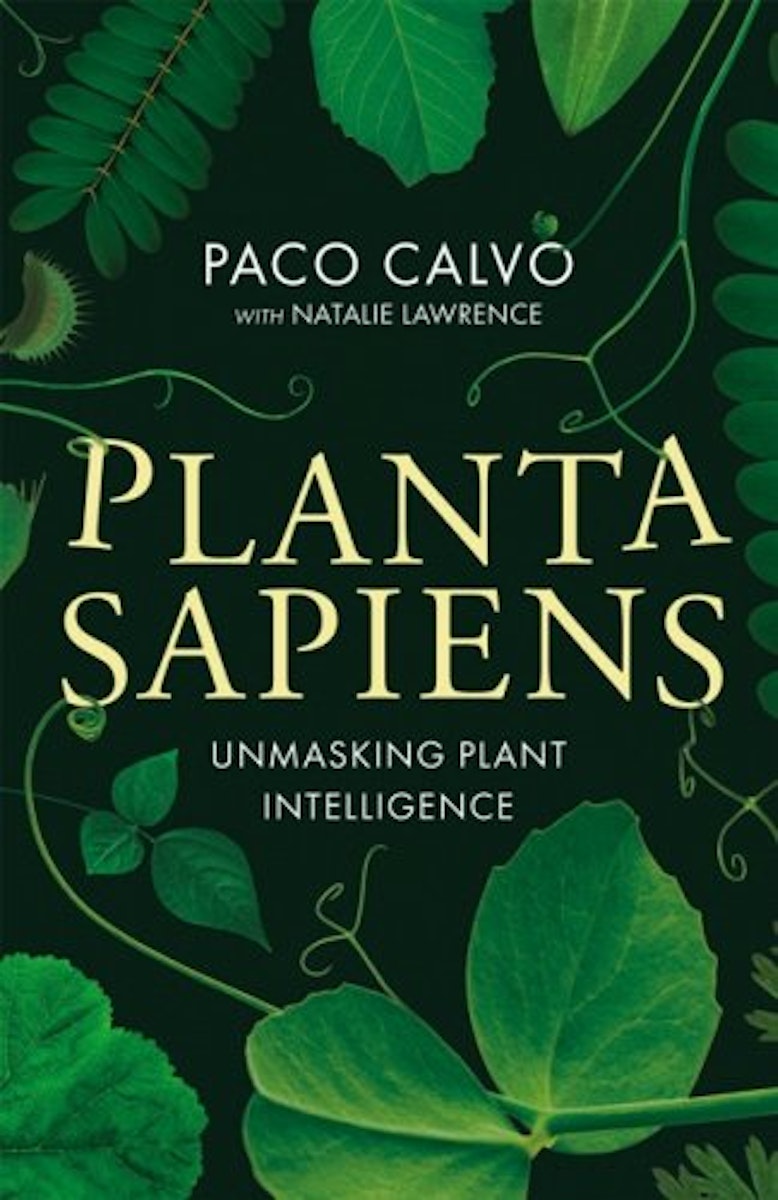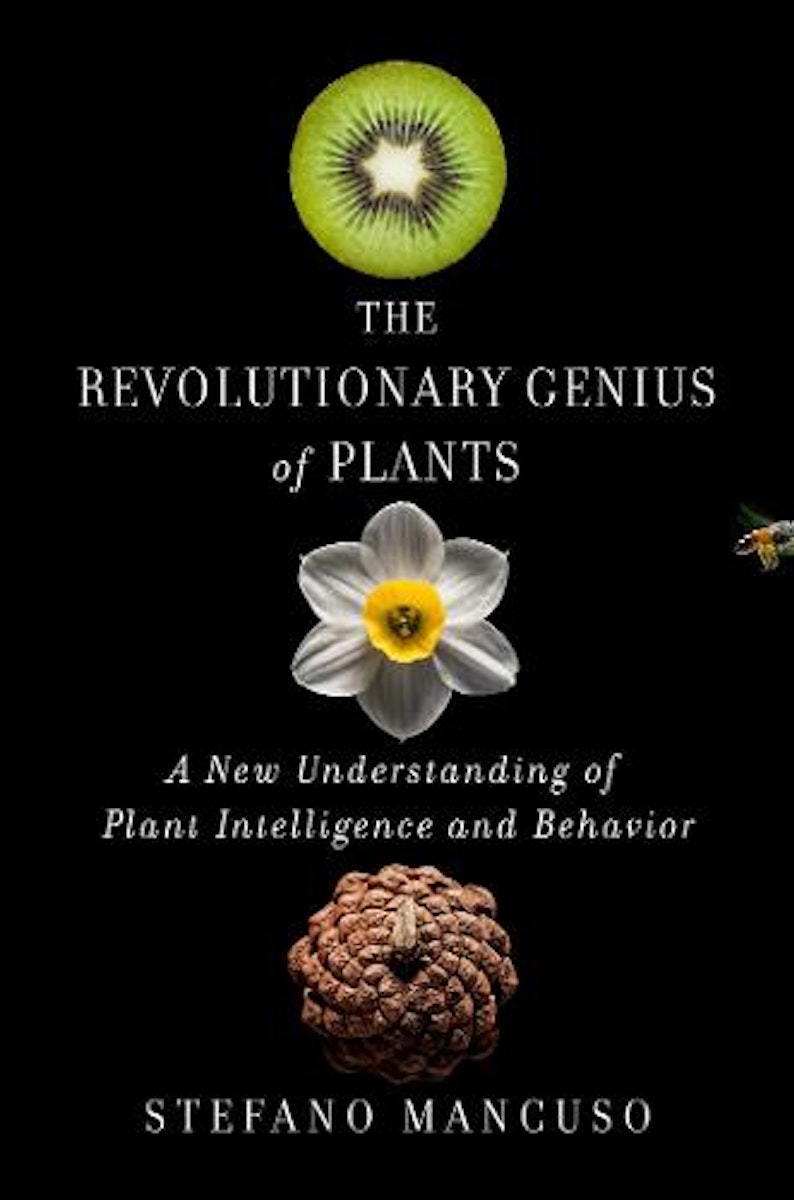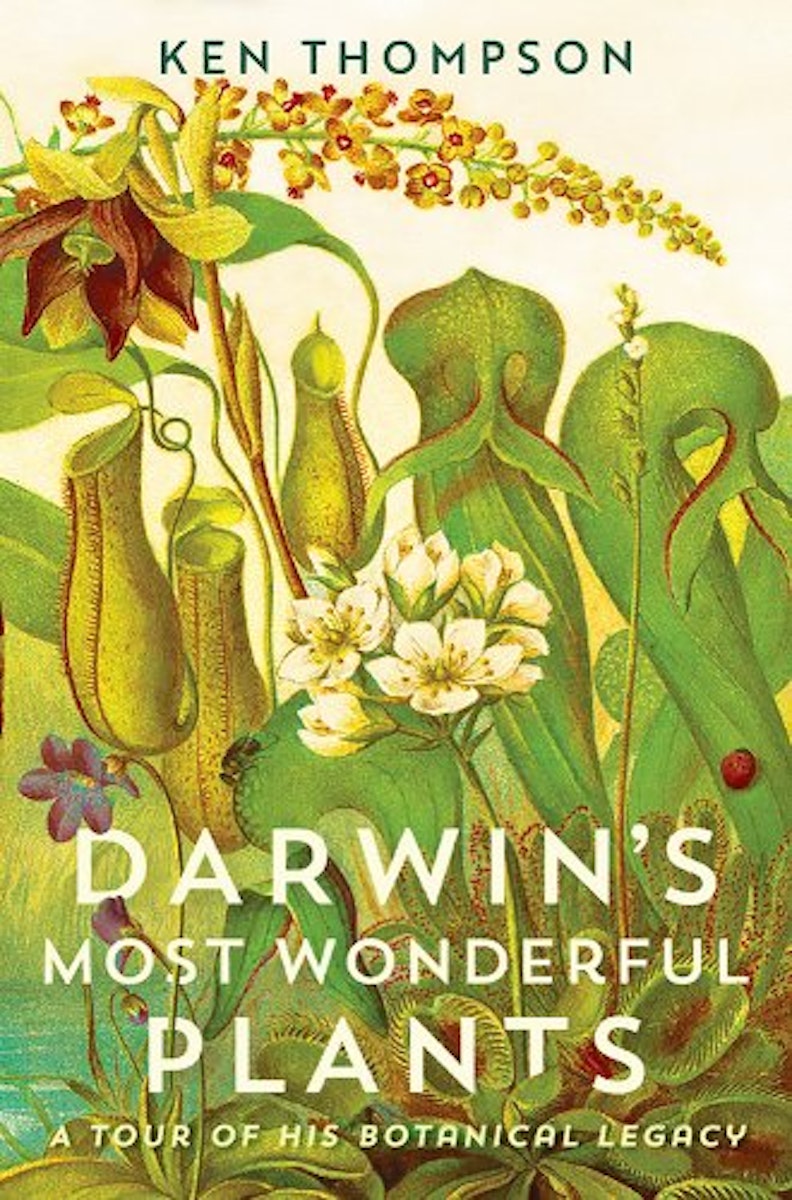
“Spontaneous Revolutions” Darwin’s Diagrams of Plant Movement
After weeks of watching young tendrils slowly corkscrew their way toward the sun, Charles Darwin set about inventing a system for making botanic motion visible to the naked eye. Natalie Lawrence delves into a lesser-known chapter of the naturalist’s research, discovering revelations about the vegetal world that remain neglected to this day.
October 26, 2022
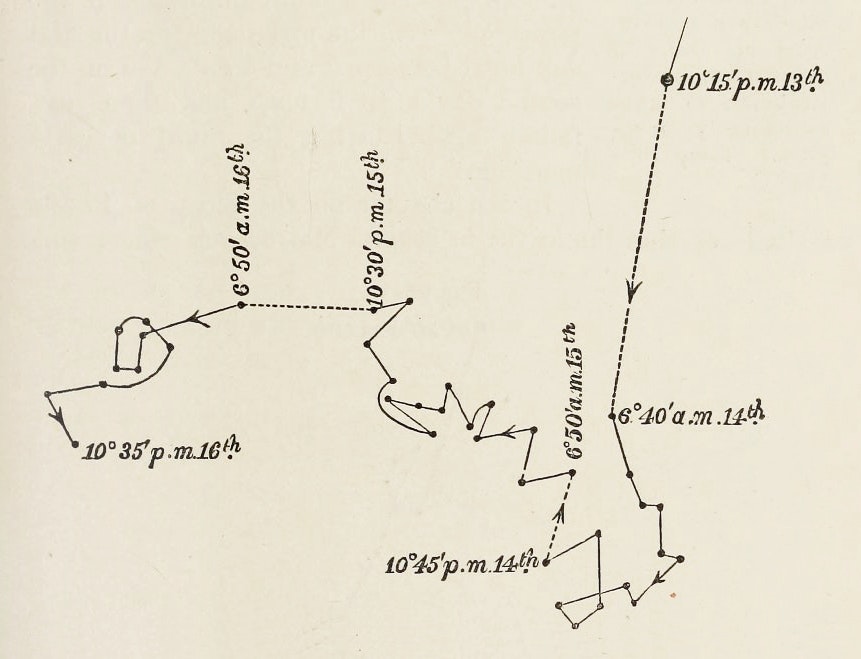 Scroll through the whole page to download all images before printing.
Scroll through the whole page to download all images before printing.The circumnutation of a young carnation leaf (Dianthus caryophyllus) across a three-day period in June, as illustrated in Darwin’s The Power of Movement in Plants (1896) — Source.
One day in 1863, during a long, hot summer, Charles Darwin wrote a letter to his close friend, the botanist Joseph Hooker. He related: “I am getting very much amused by my tendrils— it is just the sort of niggling work that suits me”.1 Darwin had spent the preceding weeks confined to bed at his home in Down House, laid low by an unpleasant bout of eczema. His usual fervent energy for research and correspondence had been frustrated by incapacity. He found solace in turning attention to the inhabitants of his bedchamber: houseplants. Darwin spent hours each day simply watching the young cucumber plants grow from the pots on his windowsills, observing how they explored the world around them seeking for things to climb up. It happened to be a very rewarding pastime. In his normal state of constant activity, Darwin would not have had the time to watch plants at plant pace. But, forced to slow down and exist at a different speed, he had become entranced.
The genesis of this interest in tendrils occurred when Darwin read a short paper in 1862 by Asa Gray, a botanist at Harvard. His “Note on the coiling of tendrils” in the Proceedings of the American Academy of Arts and Sciences described the sensitivity of growing plant tendrils to touch.2 With his imagination captured by this prospect, Darwin wrote to Gray saying “I should like to try a few experiments on your Tendrils; I wonder what would be good & easy plant to raise in pot”.3 Gray sent him seeds of two climbing plants: the bur cucumber (Sicyos angulatus) and wild mock cucumber (Echinocystis lobata), which Darwin could plant in the spring to begin his observations. Gray did warn, however, that whilst the mock cucumber was “genteel”, the bur cucumber was “as nasty and troublesome” as any plant he knew, so Darwin would have to watch it closely.4
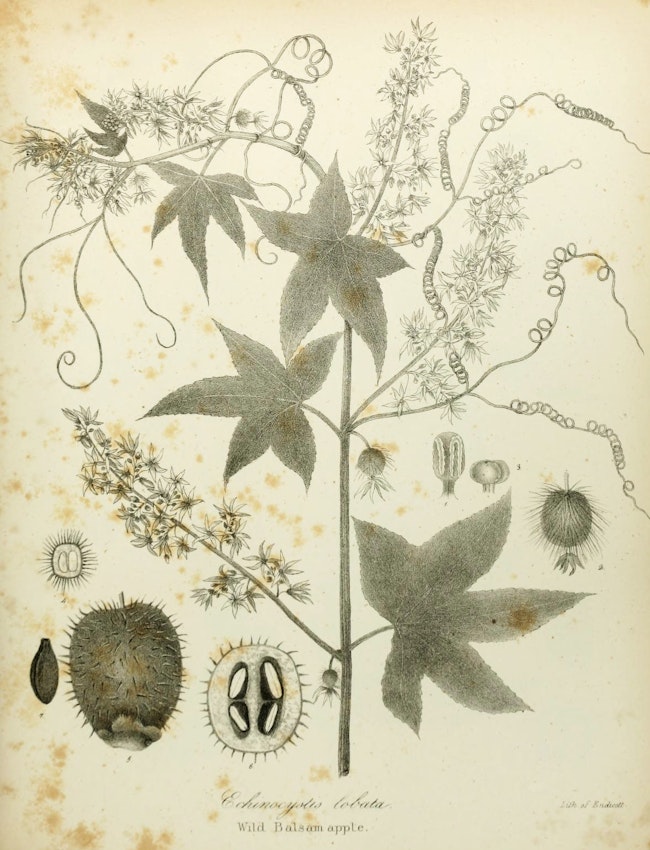 Scroll through the whole page to download all images before printing.
Scroll through the whole page to download all images before printing.Illustration of wild mock cucumber (Echinocystis lobata), also known as wild Balsam apple, from John Torrey’s A Flora of the State of New-York (1843) — Source.
Though the “troublesome” bur cucumbers failed to germinate, the mock cucumbers did well, becoming Darwin’s companions and silent interlocutors by his sick bed. They proved surprisingly charismatic. He reported back to Gray that: “I am observing the plant in another respect, namely the incessant rotatory movement of the leading shoots, which bring the tendrils into contact with any body within a circle of a foot or 20 inches in diameter”.5 The circling movement was a surprise to Darwin: these tendrils were more than just sensitive. They seemed to have a mysterious method by which to explore the world around them and find ways to climb up to the light. He called the “spontaneous revolutions” that the plants made “circumnutation” (from the Latin circum, “round”, and nutare, “to nod”). Darwin thought he had discovered something new — a phenomenon he’d never seen described in detail.
In his letters, Darwin asked Hooker for more exotic species to observe as he healed and recovered his strength and ordinarily boundless energy. He carefully tended the plants that Hooker sent, adding them to the potted cucumbers and clematis vines that were strung along his indoor windows. They grew to weave a green tapestry in front of the panes, thrusting their leaves out to bathe in the incoming light. After four months captivated indoors with and by the tendrils, Darwin had his chair moved outside. He sat in fields of hops for hours, watching their shoots seek out supports and climb them. He began to play with the growth of the plants that he watched. By attaching small weights to them to test their movements, or marking their bodies, Darwin could monitor what they were doing, even when he wasn’t constantly watching.
Much of botany in Britain at this time was focused on taxonomy. Yet Darwin wanted to do more than name and classify plants. He wanted to find new ways of looking at plants, to see them on their terms. And what he found was remarkable.6 Some of his plants genuinely surprised him. For example, to understand how parasitic dodder plants, Cuscuta pentagona, looked for supports, he placed upright poles nearby for them to find. The shoots would perform slow circling sweeps as they grew. When encountering a stick, a plant “slowly and gradually slid up the stick, so as to become more and more highly inclined”. But, after a time, “the shoot suddenly bounded from the stick and fell over to the opposite side” before returning to the support and sliding up it.7 These plants were doing something complex, and sometimes rather fast. Darwin was delighted with what he observed, waxing lyrical to his son William: “My hobby-horse at present is Tendrils; they are more sensitive to a touch than your finger; & wonderfully crafty & sagacious”.8
 Scroll through the whole page to download all images before printing.
Scroll through the whole page to download all images before printing.Detail from a photographic portrait of Darwin by Elliot & Fry, ca. 1881 — Source.
It was only when Darwin reported back to Gray about the circling movements that he realised he had rather put the cart before the horse. Gray brought him roughly down to Earth, making it clear that what Darwin saw was rather common knowledge to some researchers. The rotating movements of climbing plants like cucumbers had been described in the published literature several times. Darwin, in his enthusiasm and bedridden summer frenzy, neglected to do his background reading. When he did, pointed in the right direction by Gray, the naturalist realised that “the cream” of his observations had already been published by others, chastening him considerably.9 He wrote in a later publication: “My observations were more than half completed before I became aware that the surprising phenomenon of the spontaneous revolutions of the stems and tendrils of climbing plants had been long ago observed”.10
Darwin was no ordinary naturalist. He saw that, though circumnutation was not a new observation, scientists lacked any kind of understanding about how it happened, or what the plant was actually doing with this movement. He wanted to delve deeper. The tendrils might be “crafty and sagacious”, but just how crafty and sagacious they were — that was the fascinating question. Keen-eyed Darwin could spend all day watching plants grow, but there was the unavoidable fact that he had an animal sensory system that was not geared to observe plant growth precisely. How could he record and understand these movements in a way which might reveal what was going on? Nobody else had solved this problem, and the naturalist came up with an ingenious method.
Darwin developed a way of recording the movements of individual parts of plants as they grew and rotated through space. He placed a plant between a sheet of paper and a glass plate and marked a reference point on the paper, attaching a thin wire to a particular part of the plant, such as a leaf or bud. He made recordings at regular intervals by lining up the end of this filament with the fixed reference point, and then marking its position on the glass plate. Seeing Darwin’s strange, angular drawings without any context, it would be easy to think that they might be the tracks of a small animal — a woodlouse, beetle, or perhaps a mouse with a short attention span. They seem like the staccato perambulations of a creature that does not have a clear purpose, rambling across the paper. But that is because these are static, two-dimensional renderings of movements that occurred in three dimensions.
After many hours during which multiple points were recorded, Darwin could then trace the plant’s movement over time by connecting the dots on the plate in order. In this way, he made the movement visible to the naked eye. Darwin could even magnify movements by varying the distance between the plate and the plant. By moving it further away, he increased the angle at which the points aligned to his eye, thus stretching small movements across larger distances on the plate. In the days before time-lapse photography and cinematography, this was an incredibly creative way of capturing plant movement to make it meaningful for humans.
Plants look static to the naked eye, but all of their parts move in swaying circles: from tendrils and roots to blooms and leaves. With his new method, Darwin was able to accurately trace the movements of hundreds of plants and their individual parts, detailing their circular explorations with staggered lines. He pioneered an understanding of plant “habits”. Unlike the taxonomists concerned with what categories to put different species in, Darwin saw that when plants made changes in their physical positions, or grew into different shapes, what they were doing was really behaviour, not unlike that of animals. The difference was, animals moved rapidly, and from place to place. Plants grew slowly and moved primarily by growing.11
It was not long before Darwin compiled his observations, including those using the glass plate method, into a substantial 118-page monograph. He presented it to the Linnaean Society in 1865, publishing under the title On the Movements and Habits of Climbing Plants. In the text, Darwin linked plant movement to his evolutionary theory: plants were sensitive to their environments and used this sensitivity to guide their growth in order to survive and reproduce more successfully:
Plants become climbers, in order, it may be presumed, to reach the light, and to expose a large surface of leaves to its action and to that of the free air. This is effected by climbers with wonderfully little expenditure of organized matter, in comparison with trees, which have to support a load of heavy branches by a massive trunk. Hence, no doubt, it arises that there are in all quarters of the world so many climbing plants belonging to so many different orders.12
Many different lineages of plants had developed this method of cheating the system, from plants like cucumbers that wound tendrils around supports, to others such as clematis, that “hooked” on objects. Both were techniques that allowed plants with wisp-like stems to hitch-hike up towards the sun without investing in a trunk or rigid stem.13
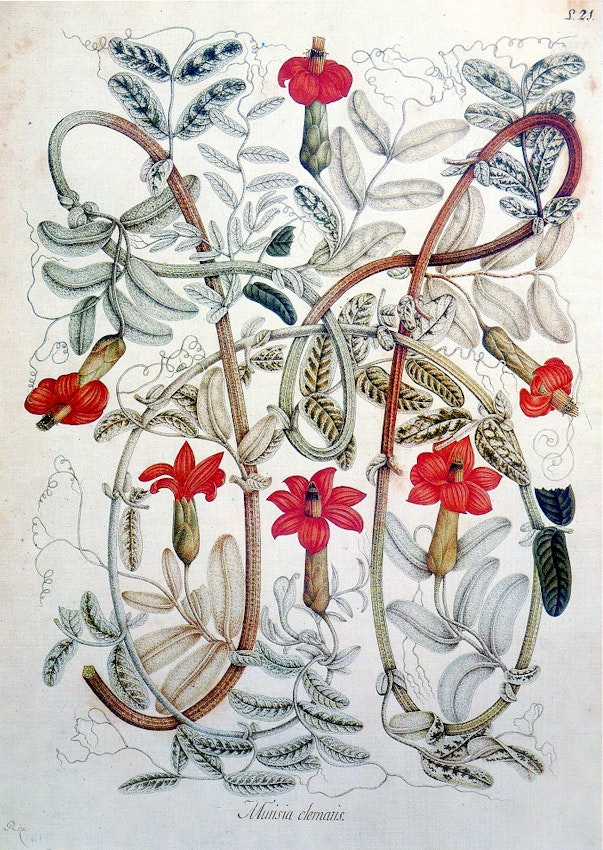 Scroll through the whole page to download all images before printing.
Scroll through the whole page to download all images before printing.Watercolour of Mutisia clematis by Salvador Rizo, painted during the Royal Botanical Exhibition to New Granada, 1783–1808 — Source.
Darwin’s work went down a storm. Benjamin Dann Walsh, a prominent entomologist in the Linnaean Society, for example, wrote that “this discovery of their sweeping circles & groping in the dark for support, like a blind Cyclops, is very astonishing”.14 Even non-scientists such as the Queen’s chaplain, Charles Kingsley, enthused: “Ah that I could begin to study Nature anew, now that you have made it to me a live thing; not a dead collection of names”.15 Additional material was sent in from naturalists further afield who read the monograph, prompting Darwin to work on a second, expanded edition, which he published in 1875.
He didn’t stop there. Assisted by his son Francis, Darwin carried out extensive further experiments on the movements of plants. One of his key insights was that “all the more important great classes of movements are due to the modification of a kind of movement common to all parts of all plants from their earliest youth”.16 The nascent movements of adult plants could be seen right from their seedling stages, from sensitivity to light and other external stimuli, to their “sleep” behaviours, which revealed a kind of circadian rhythm. Darwin published The Power of Movement in Plants in 1880 with much effort. It had grown into a weighty manuscript, which he found a “horrid bore” to revise for publication.17 It was, however, the culmination of his life’s work on plants and the penultimate book that Darwin published. It was followed only by The Formation of Vegetable Mould through the Action of Worms a year later.
 Scroll through the whole page to download all images before printing.
Scroll through the whole page to download all images before printing.Darwin’s observations became the basis of how we now understand the physiology and behaviour of climbing plants. Beyond the climbers, Darwin laid the foundations for the study of plant behaviour and intelligence. Even today, this remains an idea that is uncomfortable for some people. Though we now have time-lapse cameras and blue-chip nature documentaries that exhibit plant lives as vibrantly and dramatically as any footage of fauna, it’s hard to break out of our animal-focused view of the world. Darwin’s work showed that the centuries-old presumption “that animals moved & plants did not” was entirely wrong, a matter of perception that could be overcome.18 Yet this awareness is still not nearly as widespread as it should be.
Why is this? Some plants, such as mimosa or Venus fly traps, have very specific, seemingly responsive movements that are hard for animal senses to ignore. But most plant behaviour, which may even betray an intelligence that we are only just starting to investigate, goes totally unnoticed. What Darwin really did was see plants in a new way: to look from their perspective and observe how their movement and behaviour benefitted them. It was a project which he never quite put down.
Natalie Lawrence is a writer, researcher, and illustrator living in London. She has a MCantab in natural sciences and PhD in the history and philosophy of science from the University of Cambridge. She recently published Planta Sapiens: Unmasking Plant Intelligence (2022, Bridge Street Press) with Paco Calvo and her book The Nature of the Beast (Orion Books), on the history of monstrous creatures and the imagination, will be out in 2023.


